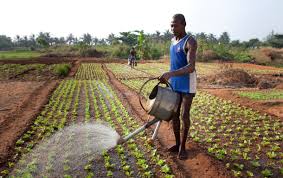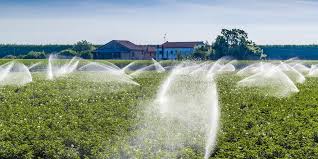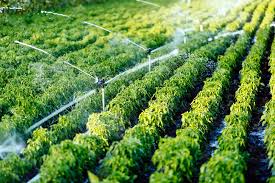All living things require nutrition as one of their characteristics as living things. Nutrition is required for growth and reproduction, and they are supplied to living things in different forms. Water is essential for both plant and animal life. When water is in short supply in plants, it causes wilting and this reduces yield of plant.
To avoid this reduction in yield, there is need to supply plant with water during period of shortage. This act of supplying water to plant during period of shortage is what is being dealt with in this article and subsequent articles.
Definition of Irrigation in Agricultural Practices
Irrigation is generally defined as the artificial application of water to soil for the purpose of supplying the moisture essential for plant growth. The primary reason for irrigating crop is to supplement water availability from natural sources such as rainfall, dew, flood, and ground water which seep into the root zone.
Read Also: General Principles of Goat Production
Purpose of Irrigation in Crop Production

Generally, irrigation is carried out for the following purposes:
1. To add water to the soil in order to supply moisture essential for plant growth
2. To provide crop insurance against short duration drought
3. To cool the soil and atmosphere thereby making the environment more favourable for plant growth
4. To wash out or dilute salt in the soil
5. To soften tillage pan and clods
6. To facilitate the functioning of some micro organisms
7. To enhance fertilizer application fertigation
Importance of Irrigation in Agricultural Development
The following are the importance of irrigation:
1. Increase crop yield
2. Provide means of production of special crops e.g. wheat, maize etc
3. Provide employment for farmers during dry season
4. Increase the economy of a nation through export
5. Increase additional income to the farmer
6. Intensification of land use
Read Also: Feed Lot Fattening of Rams Practice
Forms of Irrigation Used in Agriculture

Irrigation forms are of two types depending on the way the water is applied to the crops in the field. These are:
1. Gravitation Form of Irrigation
This is the application of water to the field in a natural form. The water flows naturally or it is guided to the field from the source to the field without any use of force. Surface irrigation uses gravitational force to apply water to crop field.
2. Pressurized Pump Form of Irrigation
This is the application of water to the field using artificial force to direct or pump the water to the field. The sub surface, sprinkler, and drip irrigation use this form of irrigation through the use of pumping machine which pumps water to the field of crops.
Irrigation makes plant survival possible and this leads to increase in crop yield which also leads to food sufficiency. Irrigation also makes crop production an all year round activity.
Do you have any questions, suggestions, or contributions? If so, please feel free to use the comment box below to share your thoughts. We also encourage you to kindly share this information with others who might benefit from it. Since we can’t reach everyone at once, we truly appreciate your help in spreading the word. Thank you so much for your support and for sharing!

